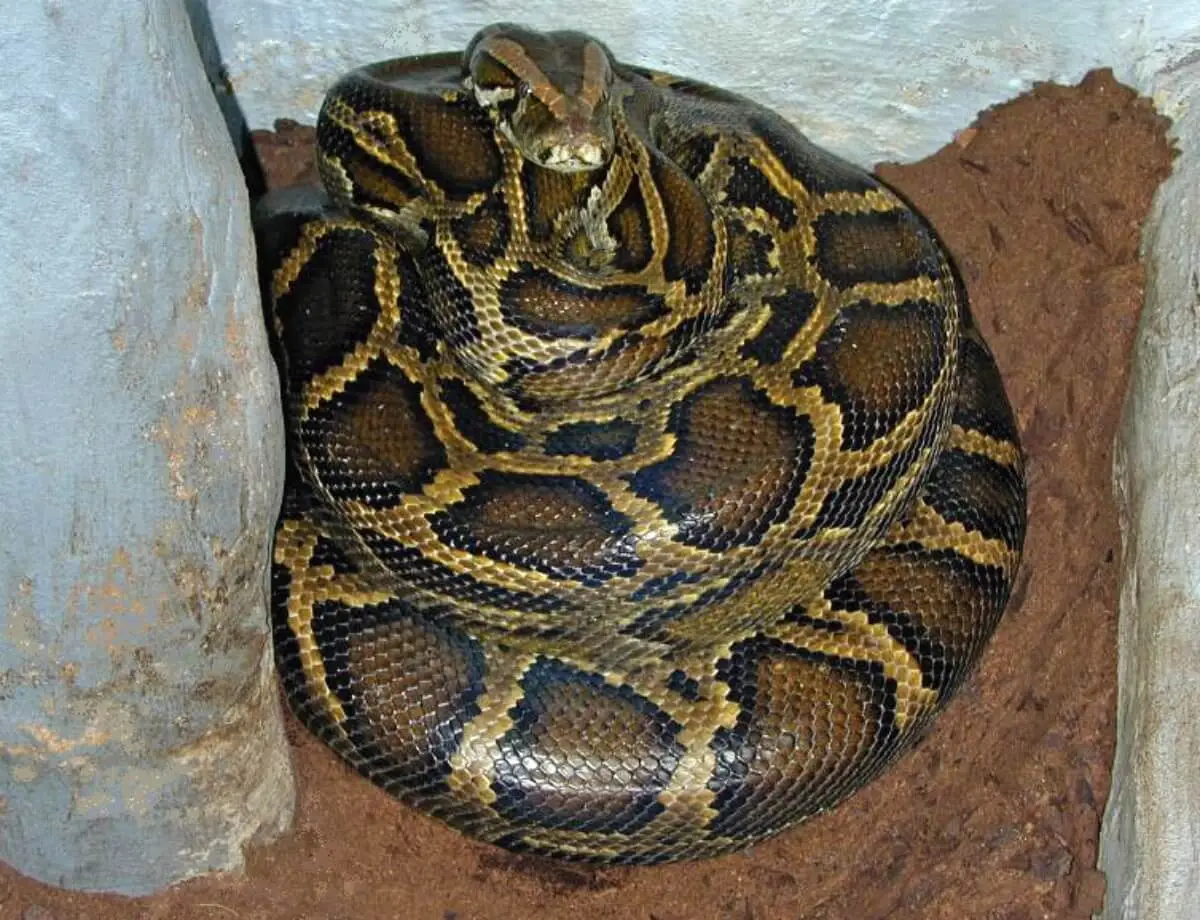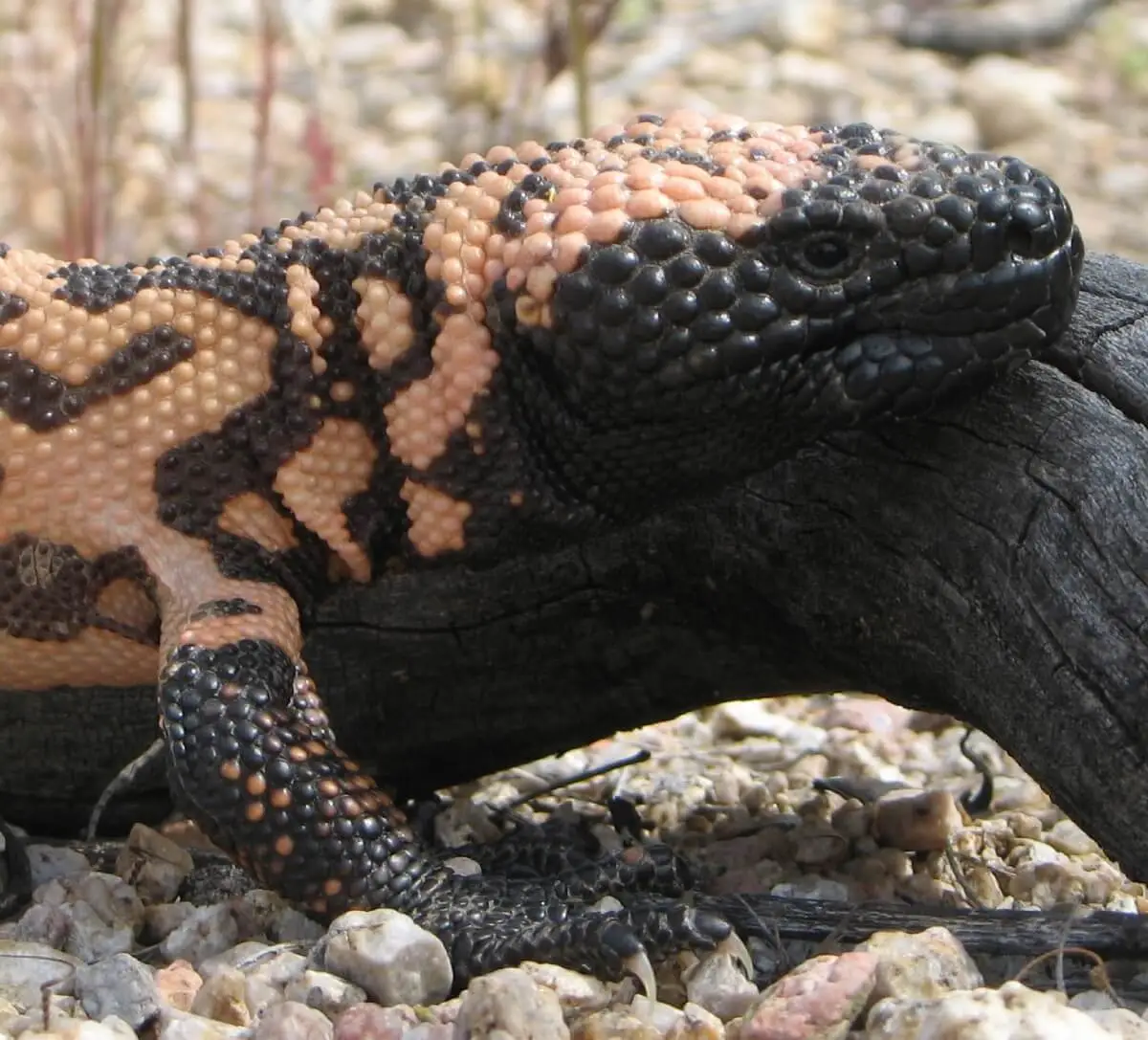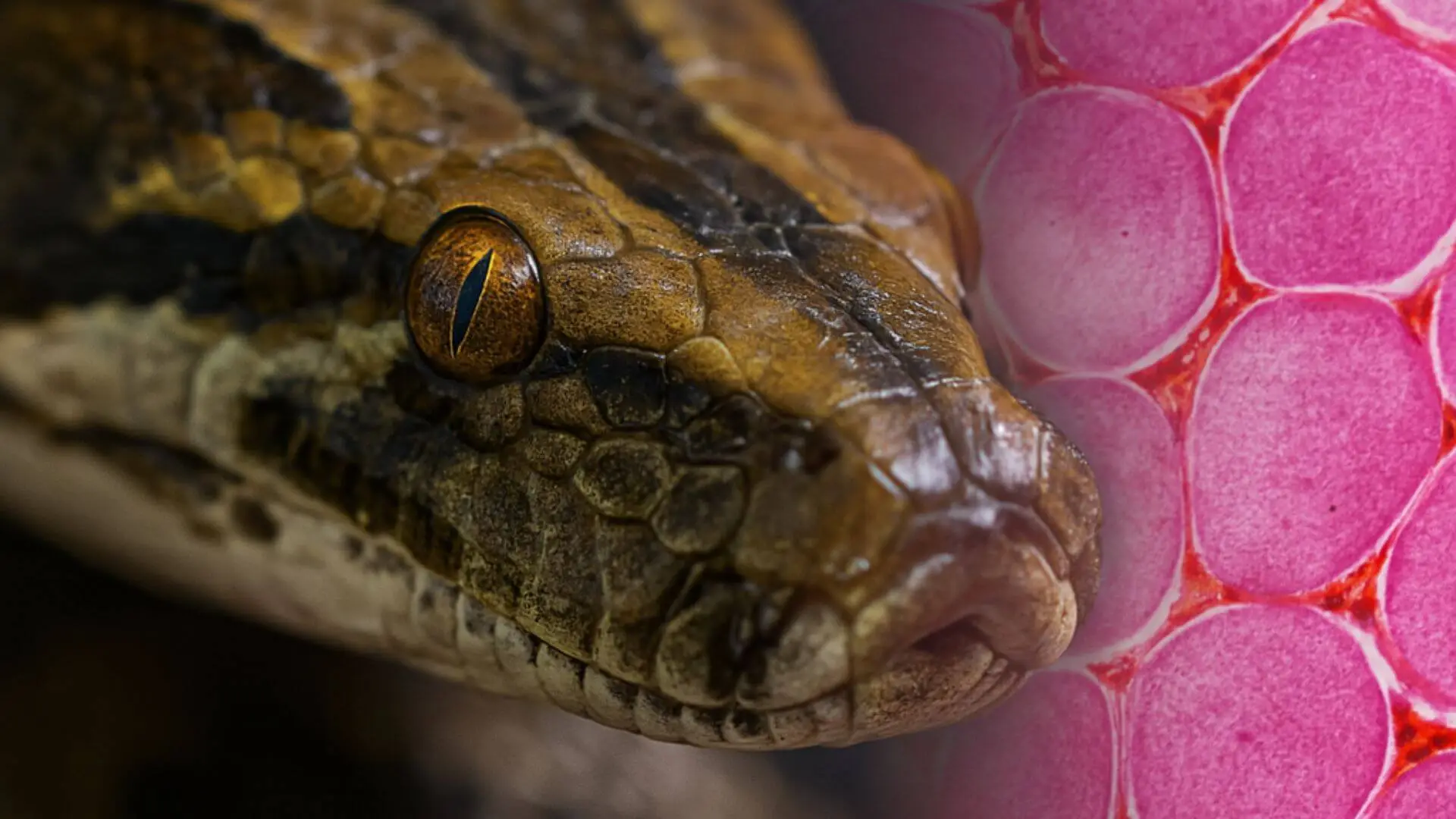A scientific team has identified for the first time a previously unknown type of cell in the intestines of Burmese pythons that allows them to completely process the bones of their prey. This discovery helps explain how these reptiles are able to digest entire skeletons without leaving a trace, precisely regulating the absorption of minerals such as calcium and phosphorus.
At first glance, a skeleton seems like an insurmountable barrier to digestion. Long, dense, calcified bones are naturally resistant. And yet, there are animals that not only ingest them, but digest them completely. The image of a snake devouring its prey whole, without separating flesh from bone, can be shocking. What few people know is that, after a few days, nothing remains of the devoured animal. Not even a trace of bone. Everything has been silently processed by a surprisingly efficient digestive system.
A new scientific study has just revealed the secret behind this digestive feat. Researchers have identified a previously unknown type of cell in the intestines of Burmese pythons (Python bivittatus) that allows them to completely break down and process the skeletons of their prey. The finding, published in the Journal of Experimental Biology, provides the first evidence of a specific cellular mechanism for managing calcium, phosphorus and other minerals present in ingested bones. And what is most striking is that this cell type has never been described in any other vertebrate. New cells for science, but not for pythonsBurmese pythons are not conventional carnivores.
Unlike most predatory mammals, they do not chew or select parts of their prey’s bodies. They swallow them whole. This includes muscles, internal organs, skin and, above all, bones. Although it may seem that their digestive system is simply more acidic or powerful, the process is much more sophisticated. The key lies in specialised cells that line their intestines.
These cells, which had not been observed before, produce particles composed of calcium, phosphorus and iron, the main minerals found in bones. According to the study’s lead researcher, Dr. Jehan-Hervé Lignot, this is a ‘very narrow cell type with short microvilli and an apical fold that forms a crypt.’ This internal crypt is where the particles accumulate, suggesting that these cells play a role in regulating or expelling excess calcium.
The discovery was not accidental. The researchers designed an experiment with three types of diet for the snakes: one with whole prey, another with boneless prey, and a third with boneless prey supplemented with calcium. Only the pythons that received calcium—either through bones or supplements—developed mineral particles in these cells. Those that ate only meat did not form any.

Complete digestion of bones: a delicate balance
Calcium is an essential mineral, but in excess it can be toxic. Hence the importance of mechanisms that control how much is absorbed.
In the case of pythons, researchers suspect that the newly described cells fulfil this function. ‘We wanted to identify how they could process and limit this enormous absorption of calcium through the intestinal wall,’ explains Dr Lignot.
The fact that no bone fragments were found in the snakes’ faeces confirms that the skeletons were completely digested and absorbed. But that does not mean that all minerals are incorporated into the body. In fact, the excess probably accumulates in the particles formed by these cells and is eliminated from the body in a controlled manner. This finding solves an ancient mystery about how certain reptiles can ingest bones without becoming ill from hypercalcemia.
Furthermore, the study points out that these cells do not only exist in Burmese pythons. They have also been identified in other species of pythons and boas, as well as in the Gila monster (Heloderma suspectum), a venomous lizard that also consumes whole prey. This suggests that the mechanism may be present in various reptiles with similar feeding habits.

Implications beyond reptiles
One of the most intriguing aspects of the finding is its possible evolutionary relevance. The study authors suggest that other species that consume whole bones—such as certain marine predators or scavenger birds—may have developed comparable mechanisms. ‘Marine predators that eat bony fish or aquatic mammals must face the same problem,’ says Lignot. ‘Birds that feed mainly on bones, such as the bearded vulture (Gypaetus barbatus), would also be fascinating candidates.’
This observation opens up new lines of research. Although there is no evidence yet that mammals such as dolphins or seabirds have similar cells, scientists do not rule out this possibility. The finding in reptiles could serve as a model for exploring equivalent mechanisms in other branches of the evolutionary tree.
In addition, the study highlights the need to reconsider how we understand bone digestion in vertebrate animals. Until now, it was assumed that the fragmentation and dissolution of bones was a generic chemical process. However, this specialised cell type suggests that there are very specific anatomical adaptations that allow for this level of digestive efficiency.
The future of the study: beyond the gut
The discovery also raises new questions about how these cells develop, how they are activated and what their life cycle is. Do they only appear after certain meals? Are they constantly renewed? Could they be influenced by hormonal or environmental factors? These are questions that remain unanswered, but which the research team hopes to address in future phases of the study.
On the other hand, a better understanding of this cell type could have practical applications. In medicine and nutrition, calcium regulation mechanisms are fundamental. If we can understand how these cells modulate the absorption and expulsion of minerals, new ideas could emerge for treating disorders related to calcium metabolism in humans.
The study also shows how comparative biology—the analysis of functions between different species—can reveal ingenious evolutionary solutions to common problems. In this case, the challenge is how to harness nutrients from bone without excess minerals damaging the body. Pythons, through a silent and efficient strategy, seem to have found a very effective answer.

